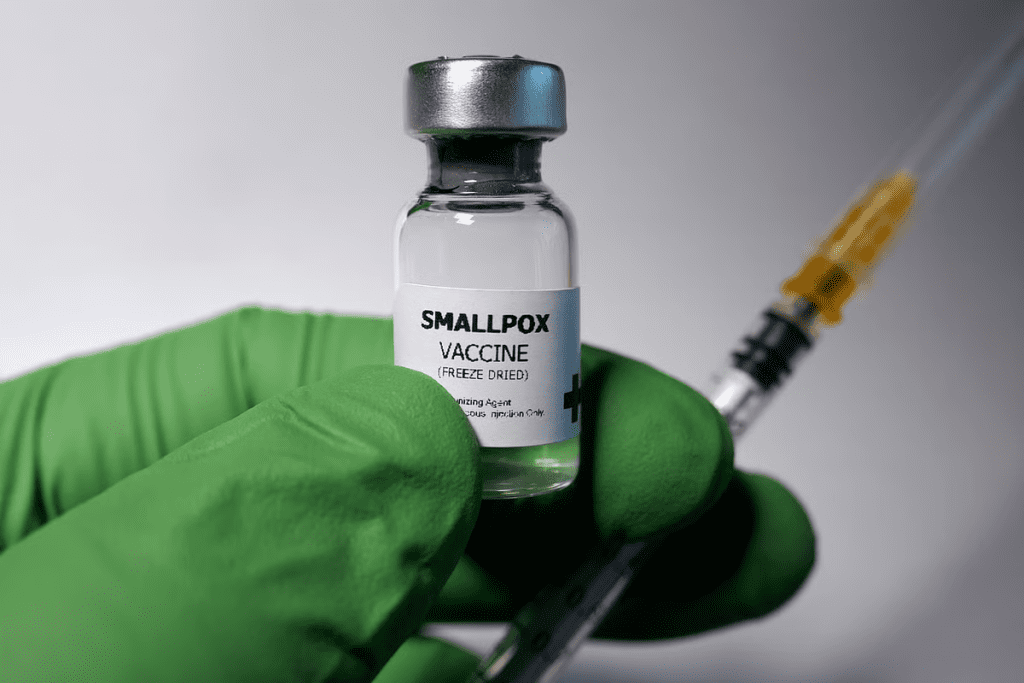Smallpox once held a deadly grip on humanity. It was one of the most contagious and lethal diseases in history, causing widespread suffering, death, and scars. But thanks to the development of the smallpox vaccine and a global vaccination campaign, this disease was eradicated in 1980—a feat considered one of the greatest achievements in medical history. Today, smallpox is a disease of the past, and the scars left behind from the vaccine are all that remain to remind us of this monumental victory.
Understanding Smallpox: A Deadly and Contagious Disease

Smallpox was caused by the variola virus and was highly contagious. The virus spread easily through airborne droplets when an infected person coughed or sneezed, and it could also be transmitted through direct contact with contaminated surfaces or items. Smallpox had a high mortality rate, with roughly 3 out of every 10 infected people dying from the disease.
The disease was not only deadly but also disfiguring. Survivors often faced permanent scars, particularly on their faces and bodies. In some cases, smallpox even led to blindness, further affecting the quality of life for those who survived. With such a devastating impact on individuals and communities, smallpox became a top priority for eradication.
The Breakthrough: Smallpox Vaccination
The key to defeating smallpox was the development of the smallpox vaccine. In the late 18th century, Edward Jenner, a British physician, discovered that inoculating people with a related virus called vaccinia, which is similar to variola but harmless, could protect them from smallpox. This early form of vaccination laid the foundation for the global effort that would follow.
Vaccination against smallpox became more refined over time. The vaccinia virus triggered a strong immune response without causing the disease itself. By the mid-20th century, scientists had developed a more efficient and accessible vaccine that would eventually lead to smallpox’s eradication.
Video : How Did We Kill Smallpox?
The Global Vaccination Campaign: A Step Toward Eradication
In 1967, the World Health Organization (WHO) launched a massive global campaign to eliminate smallpox. The vaccine was distributed worldwide, and millions of people received the vaccination. The process was straightforward but effective. The vaccine was typically administered with a special two-pronged needle (bifurcated needle), which was used to puncture the skin multiple times in a small area, usually on the upper arm. This technique caused a localized reaction, forming a scab that eventually fell off, leaving behind a small, round scar.
The Iconic Scar: A Visible Reminder of Vaccination
The small round scar left behind by the smallpox vaccine became a visible reminder of a person’s immunity to the disease. For those who received the vaccine, this scar marked them as part of a global effort to eradicate smallpox.

While the process of receiving the vaccine was relatively simple, the scar it left behind has become a symbol of medicine’s incredible success in conquering a devastating disease. The scar is now rare, especially among younger generations who were never vaccinated due to the disease’s eradication. For older generations, however, it remains a lasting testament to the hard-fought battle against smallpox.
The End of Smallpox: A Historic Achievement
Thanks to the widespread use of the smallpox vaccine and the dedication of health workers and governments around the world, smallpox was officially declared eradicated in 1980 by the World Health Organization. This was a momentous achievement, as smallpox had plagued humanity for centuries, leaving a trail of devastation in its wake.
Following the eradication, routine smallpox vaccinations were stopped in the United States in 1972. With no new cases of smallpox reported, there was no longer a need for widespread vaccination. Today, smallpox remains the only human disease to have been eradicated globally, and the victory over smallpox is a powerful example of how science, global cooperation, and vaccination can defeat even the deadliest of diseases.
Video : “Eradicating Smallpox: A Triumph of Global Health 🌍💉”
Vaccination: The Key to Smallpox Eradication
The smallpox vaccine was central to the successful global effort to eradicate the disease. While the vaccine was widely successful, it was not without its risks. Some people experienced mild side effects, such as soreness at the injection site, fever, or mild rashes. In very rare cases, however, more serious complications occurred, including severe allergic reactions or heart issues. Because of these potential risks and the fact that smallpox was no longer a threat, routine vaccinations were discontinued once the disease was eradicated.
Despite these rare complications, the success of the vaccination campaign cannot be overstated. The smallpox vaccine saved millions of lives and ultimately wiped out the disease entirely. This monumental achievement showcases the power of vaccines to fight and eliminate deadly diseases.

A Reminder of Our Medical Triumph: The Legacy of Smallpox Eradication
The eradication of smallpox remains one of the greatest public health accomplishments in human history. It serves as a powerful reminder of the impact that science and vaccines can have on global health. While smallpox is no longer a threat, the lessons learned from its eradication continue to inform public health efforts around the world. Today, vaccines remain one of the most effective tools in the fight against infectious diseases, protecting millions from preventable illnesses.
For those of us who remember the smallpox vaccine, the small round scar left on our arms represents much more than a reminder of the past—it symbolizes the power of human ingenuity, collaboration, and the triumph of public health.
Conclusion: The Lasting Impact of Smallpox Eradication
Smallpox was once one of the deadliest and most contagious diseases in the world, but thanks to the development of the smallpox vaccine and a global effort to vaccinate the population, it was eradicated in 1980. The small round scar left by the vaccine serves as a lasting reminder of this incredible achievement. For older generations, this scar symbolizes a global victory over a deadly disease, while for younger generations, it stands as a testament to the power of vaccines and the importance of global health initiatives. The eradication of smallpox is not just a victory for medicine—it’s a triumph for humanity as a whole.


